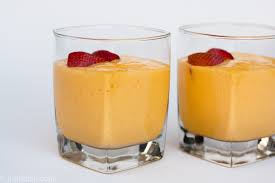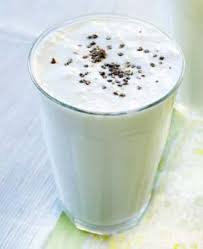Deccanherald :31May 2012
Baishali Adak
Delicious drink
Speaking of lassi in Delhi, the first few names which come to mind are Old Delhi’s famous Amritsari Lassi Wala, Meghraj Lassi Wala and Raj Lassi Wale.
Old-timers would fondly remember having lassi from these three shops malai maarke, but times changed and so did these lassi vends. For want of customers at Fatehpuri, Amritsari Lassi closed down last year but fortunately for lassi lovers, Meghraj is doing brisk business and Raj Lassi Wale recently found a new location - at Netaji Subhash Place in North Delhi.
In fact, a lot has changed for Raj Lassi Wale. It has expanded its business to snacks, chhole bhature and thalis and is attracting huge crowds at its stylish new location as compared to the charming old Fatehpuri. Yet a lot has stayed the same. For starters, there has been no tampering with their original creamy, sweet, cold and frothy lassi; the manner in which it is still served and most notably, the nameplate - Purani Dilli ke Mashhoor Raj Lassi Wale
Old-timers would fondly remember having lassi from these three shops malai maarke, but times changed and so did these lassi vends. For want of customers at Fatehpuri, Amritsari Lassi closed down last year but fortunately for lassi lovers, Meghraj is doing brisk business and Raj Lassi Wale recently found a new location - at Netaji Subhash Place in North Delhi.
In fact, a lot has changed for Raj Lassi Wale. It has expanded its business to snacks, chhole bhature and thalis and is attracting huge crowds at its stylish new location as compared to the charming old Fatehpuri. Yet a lot has stayed the same. For starters, there has been no tampering with their original creamy, sweet, cold and frothy lassi; the manner in which it is still served and most notably, the nameplate - Purani Dilli ke Mashhoor Raj Lassi Wale
In fact, Raj Lassi Wale has quite a history. Its owner Sanjay Narula, a 60-year old cheerful man informs us, “My father Raj Kumar Narula, after whom this place is named, used to run a kadhai ka doodh (condensed sweet milk) shop in Lahore. Post Partition he migrated to Delhi and started this shop at Fatehpuri Chowk in 1956. Initially, here also he used to make only kadhai ka doodh, then he started making and selling his own dahi (curd) and then finally came lassi.
“At that time the Old Delhi Railway station and ISBT bus stop would be bustling with people 24 hours a day. Tired and thirsty tourists would come to our shop for a cold glass of lassi and return satisfied. Our quality milk and tasty preparation also made us a favourite with the businessmen of the Chandni Chowk area and that is how our good name spread. Fortunately for us, the fame has followed us to Netaji Subhash Place as well.”
He further informs us that in the olden days his father Raj Narula used to prepare lassi by hands. “Our pedhe lassi, in which pedha (a thick sweet) is mixed with curd and then churned by hands, was very popular. My father never mixed water with curd. It was only curd, sweet and gulab jal, and we maintain that tradition till date. However, in time, the demand for pedha lassi came down as people became more health conscious and started asking for lighter lassis.”
At around the same time that Raj Narula passed away and Sanjay took over in 1986, came the next major change - the lassi machine. “The machine automatically reduced the effort but the taste which comes from the hand churned lassi can never be compared with the machine-made as it is not as thick,” adds Sanjay.
After they moved to their new locale in June 2011, they brought out different flavours like the namkeen lassi or jeera lassi - which uses eight different roasted masalas, mango lassi and chhaach - a thinner variety of the namkeen lassi, besides the regular sweet lassi. However, they surely know how to make even the regular lassi special. The lassis are served only in kullhad (earthen pots) and not in plastic glasses to keep them cool and tasty, and top it with delicious rabri ki malai.
Sanjay adds, “My son Joy, a B.Com graduate from Delhi University, almost refused to help me with managing the shop there saying Fatehpuri is too hot and congested. So we moved to Netaji Subhash Place, but I am somehow able to associate lassi only with Chandni Chowk. Perhaps, one day, when we have that much money, we can open a branch in Chandni Chowk again. That, for me, would be lassi coming a full circle.” Lassi lovers would surely agree.
“At that time the Old Delhi Railway station and ISBT bus stop would be bustling with people 24 hours a day. Tired and thirsty tourists would come to our shop for a cold glass of lassi and return satisfied. Our quality milk and tasty preparation also made us a favourite with the businessmen of the Chandni Chowk area and that is how our good name spread. Fortunately for us, the fame has followed us to Netaji Subhash Place as well.”
He further informs us that in the olden days his father Raj Narula used to prepare lassi by hands. “Our pedhe lassi, in which pedha (a thick sweet) is mixed with curd and then churned by hands, was very popular. My father never mixed water with curd. It was only curd, sweet and gulab jal, and we maintain that tradition till date. However, in time, the demand for pedha lassi came down as people became more health conscious and started asking for lighter lassis.”
At around the same time that Raj Narula passed away and Sanjay took over in 1986, came the next major change - the lassi machine. “The machine automatically reduced the effort but the taste which comes from the hand churned lassi can never be compared with the machine-made as it is not as thick,” adds Sanjay.
After they moved to their new locale in June 2011, they brought out different flavours like the namkeen lassi or jeera lassi - which uses eight different roasted masalas, mango lassi and chhaach - a thinner variety of the namkeen lassi, besides the regular sweet lassi. However, they surely know how to make even the regular lassi special. The lassis are served only in kullhad (earthen pots) and not in plastic glasses to keep them cool and tasty, and top it with delicious rabri ki malai.
Sanjay adds, “My son Joy, a B.Com graduate from Delhi University, almost refused to help me with managing the shop there saying Fatehpuri is too hot and congested. So we moved to Netaji Subhash Place, but I am somehow able to associate lassi only with Chandni Chowk. Perhaps, one day, when we have that much money, we can open a branch in Chandni Chowk again. That, for me, would be lassi coming a full circle.” Lassi lovers would surely agree.


 My favourite mango is the Hapus from Mumbai. But only if you call it Hapus. I am not prepared to gush over some Portuguese Alphonso.
My favourite mango is the Hapus from Mumbai. But only if you call it Hapus. I am not prepared to gush over some Portuguese Alphonso. It is a summer drink that allows you to enjoy the best of India in an international manner. I also like the raw mangoes that they use in Kerala as a souring agent in their food. But I fear that the rest of us do not do mangoes enough justice as cooking ingredients.
It is a summer drink that allows you to enjoy the best of India in an international manner. I also like the raw mangoes that they use in Kerala as a souring agent in their food. But I fear that the rest of us do not do mangoes enough justice as cooking ingredients. Chef consultant, gourmand and food connoisseur
Chef consultant, gourmand and food connoisseur The best part is you don’t have to wait for the Totapuri to ripen. I love to use it in a mango crumble pie or sorbet.
The best part is you don’t have to wait for the Totapuri to ripen. I love to use it in a mango crumble pie or sorbet. I love Alphonso but I also love Chausa and Kaeri. There is only one way to enjoy mangoes, just suck the flesh out!
I love Alphonso but I also love Chausa and Kaeri. There is only one way to enjoy mangoes, just suck the flesh out! My favourite mango is the Daseri because I acquired the taste as a child. The Malihabadi Daseri is superior to any Hapus. The Daseri is aromatic, fleshy and has a thin skin. No Alphonso matches the Daseri. Also the Hapus is very expensive and overrated.
My favourite mango is the Daseri because I acquired the taste as a child. The Malihabadi Daseri is superior to any Hapus. The Daseri is aromatic, fleshy and has a thin skin. No Alphonso matches the Daseri. Also the Hapus is very expensive and overrated.
 The first ‘mango’ I had was in Sharwood’s mango chutney. My mother used to make me cheese and chutney sandwiches when I was a kid. My first real mango was at university and it was love at first bite.
The first ‘mango’ I had was in Sharwood’s mango chutney. My mother used to make me cheese and chutney sandwiches when I was a kid. My first real mango was at university and it was love at first bite. I do have a second favourite though. This is the Kachi Kaeri or green mango, which I like in fresh pickle, dal, panna, any which way actually.
I do have a second favourite though. This is the Kachi Kaeri or green mango, which I like in fresh pickle, dal, panna, any which way actually. Manish Mehrotra
Manish Mehrotra The best way to have the Malda is to eat it just like that. There's no need to cut it either. Peel it, eat it and enjoy!
The best way to have the Malda is to eat it just like that. There's no need to cut it either. Peel it, eat it and enjoy! I am not dogmatic on the subject. I like lots of different kinds of mangoes – depending on the season, and where I am in the world.
I am not dogmatic on the subject. I like lots of different kinds of mangoes – depending on the season, and where I am in the world.








